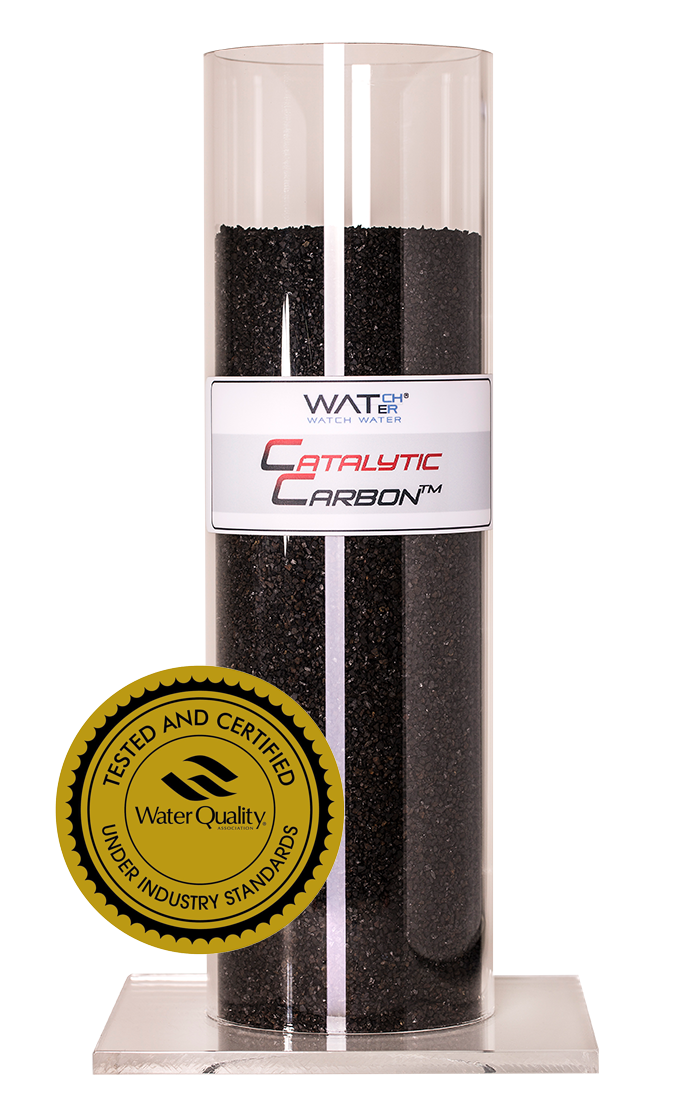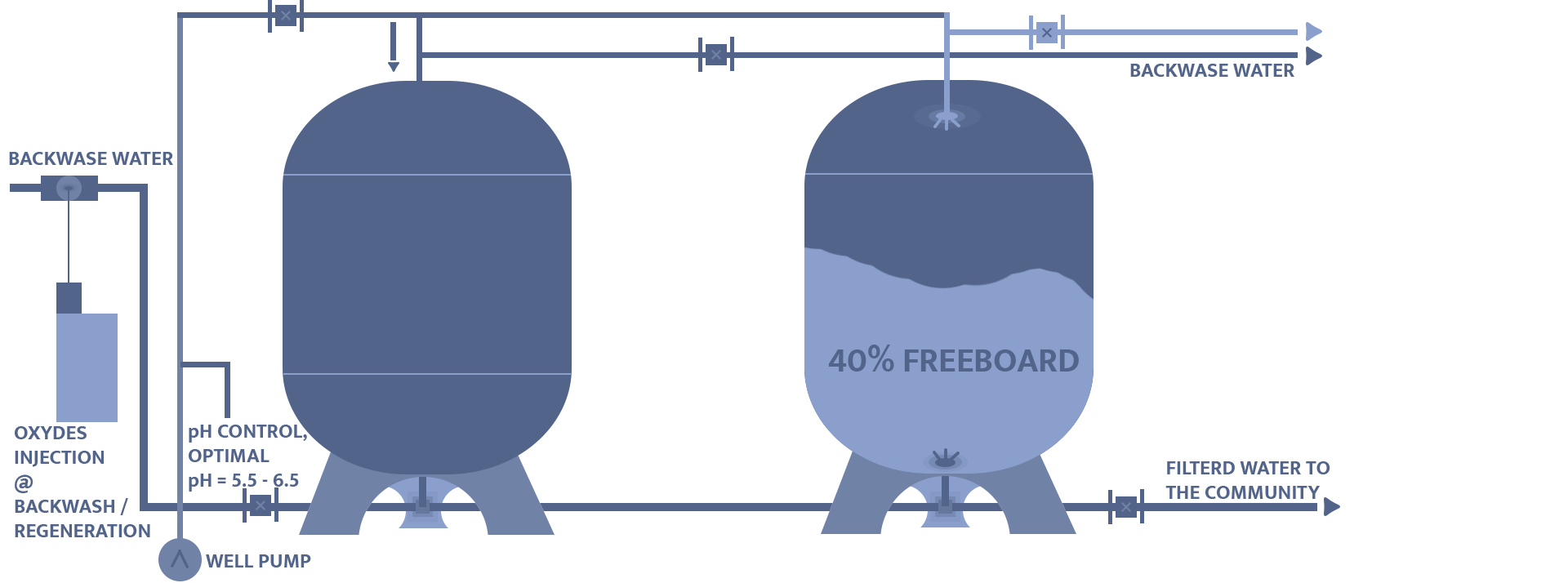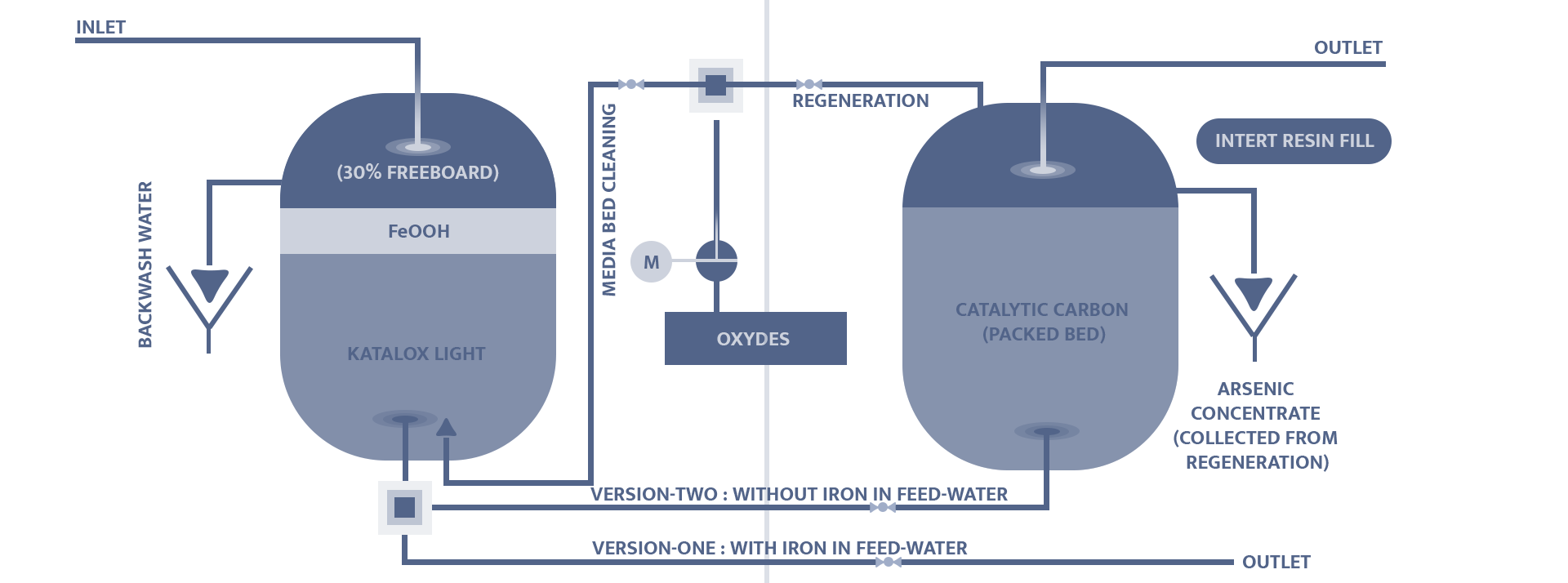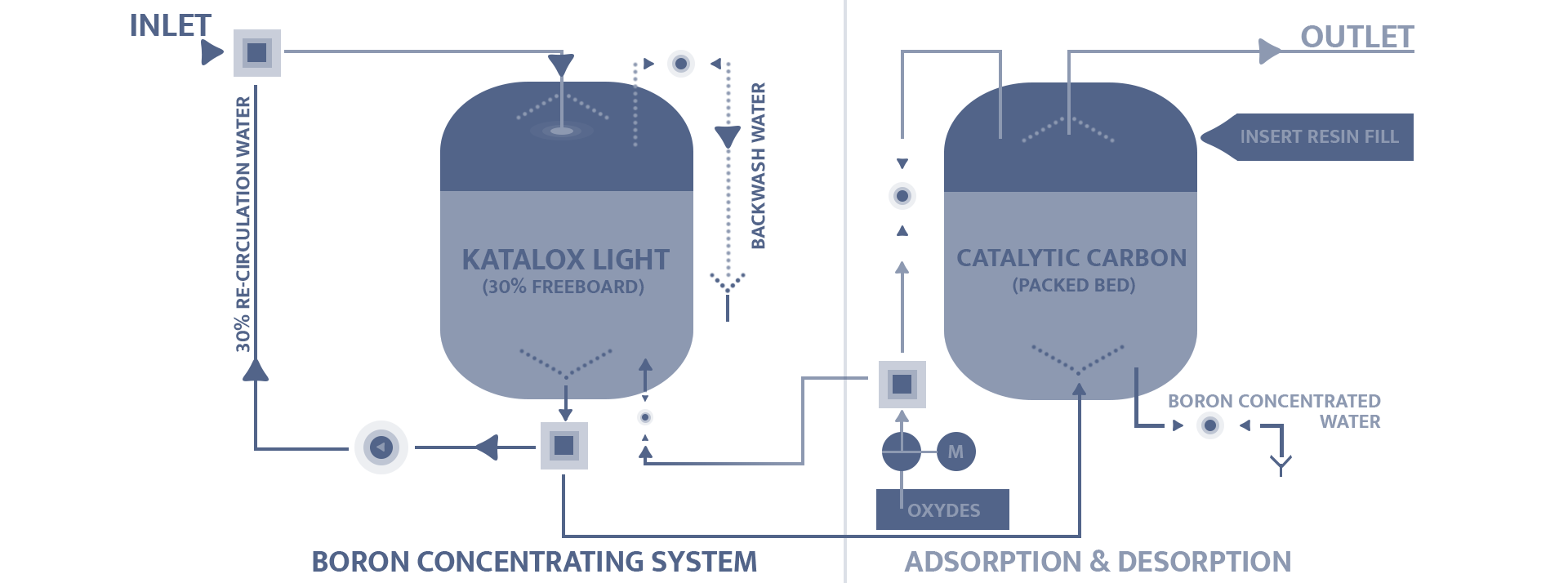Introduction

Media Description: High content (10%) Feroxyhyte (FeOOH) coated GAC
Catalytic-Carbon™ Removal methods:
1. Mechanical Filtration (fine particles, TSS, Turbidity down to 1 micron)
2. Adsorption of organic contaminants
3. Adsorbtion of inorganic contaminants (e.g. As, Heavy Metals, Radionuclides)
| Filtration (≤ 1 µm) of | Removal of | Best features | Regeneration of Catalytic Carbon with OXYDES-P |
|---|---|---|---|
| Total Suspended Solids | Humic Substances | Feroxyhyte coated Granular Activated Carbon | Usage: 1% Concentrated Solution of OXYDES-P |
| Sediments | Tanins & Lignin | Very high surface area | Usage: 1% Concentrated Solution of OXYDES-P |
| Turbidity | Color & Odor (organic) | Chemically Regenerable with OXYDES & OXYDES-P | |
| Chloramines | No mandatory dosing required | ||
| Trihalomethanes (THMs) | Light weight media - saves backwash water | ||
| Phenols & p-nitro phenol | Replacement frequency : every 2 - 5 years | ||
| All kind of Dyes | pH regulation in the range of 6.5 - 6.9 is strongly recommended for removal of Cr(III) and As(III) | ||
| Phenols & p-nitro phenol | |||
| Inorganic (Arsenate, Arsenide, Chromium, Copper, Cyanide, Fluoride, Lead, Mercury & Selenium) |







